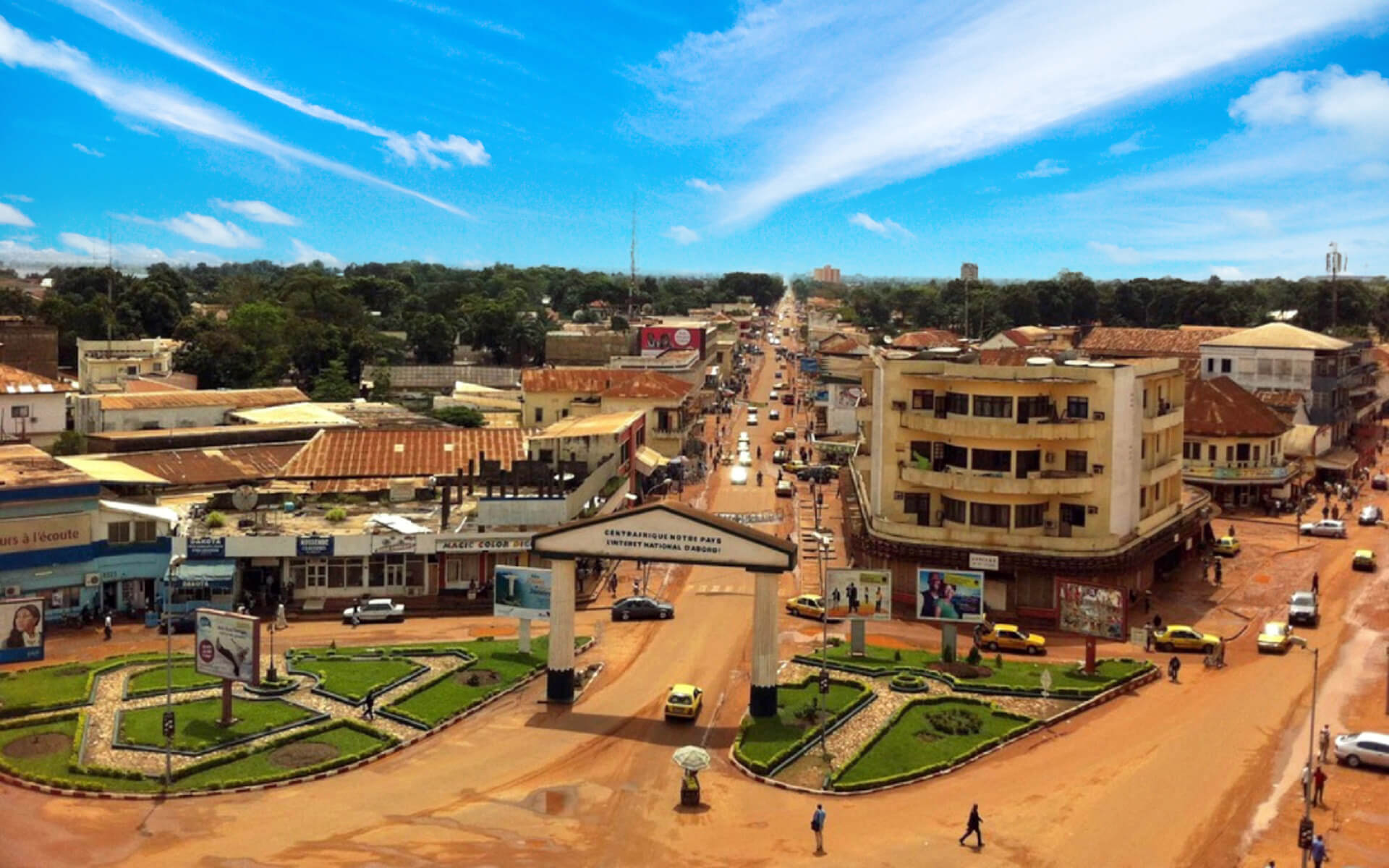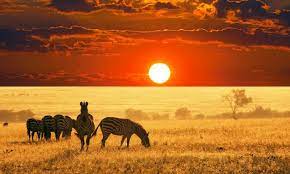Central African Republic travel tips
Central African Republic travel tips: In Central Africa, features diverse landscapes, wildlife, and a complex history with ongoing challenges and conflicts.
Regions 🌎
Central African Republic travel tips. Here is a list of all the regions of the Central African Republic.

Ouham

Bamingui-Bangoran

Bangui

Basse-Kotto

Haute-Kotto

Haut-Mbomou

Haute-Sangha

Gribingui

Kémo

Lobaye

Mbomou

Ombella-M’Poko

Nana-Mambéré

Ouham-Pendé

Sangha-Mbaéré

Ouaka

Vakaga
Before you go 🛩
Important information you should know before your trip
Info

Capital | Bangui
Flag Codes:
ISO alpha-2 CF,
ISO alpha-3 CAF
Currency
Badge | CFA franc
CODE | XAF
NUMBER | 950
SYMBOL | Fr
FRACTION | penny
Mobile Coverage
Dialing Code | +236
SIM Card
Coverage | 3G / 4G / 5G |
Mobile Networks | Moov Mobile | Orange Mobile | Telecel Mobile |

Location
The Central African Republic (CAR) is a landlocked country located in the heart of Africa. It is situated in the central part of the African continent and is bordered by several countries.
Geographical Features: The Central African Republic features a diverse range of landscapes, including dense rainforests in the south, savannas, plateaus, and low-lying plains in the central and northern regions. The country is intersected by numerous rivers, with the Ubangi River being one of the major waterways.
Capital City: The capital city of the Central African Republic is Bangui, which is located in the southwestern part of the country and situated on the banks of the Ubangi River.
The Central African Republic’s geographical location and diverse ecosystems contribute to its rich biodiversity and natural resources. It is known for its wildlife, including forest elephants and various species of primates, making it a destination for ecotourism and conservation efforts.
Currency
The currency of the Central African Republic is the Central African CFA franc, abbreviated as XAF.
It is one of two currencies that use the CFA franc name, with the other being the West African CFA franc (XOF).
Both of these currencies are used in multiple countries in West and Central Africa and are guaranteed by the French Treasury.
The Central African CFA franc (XAF) is further subdivided into smaller units, with 100 centimes making up one franc.
Banknotes and coins of various denominations are in circulation in the Central African Republic, and the currency is regulated by the Bank of Central African States (BEAC), which is the central bank for the Economic and Monetary Community of Central Africa (CEMAC).
The CFA franc is pegged to the euro at a fixed exchange rate.
Languages
The Central African Republic is a linguistically diverse country with numerous languages spoken by its population. However, the official languages of the Central African Republic are French and Sango.
French: French is the primary official language and is used in government, administration, education, and the media. It is also the language of instruction in schools and universities.
Sango: Sango is a national language and serves as a lingua franca, or a common language of communication, among the diverse ethnic groups in the Central African Republic. It is widely spoken and understood across the country and is used in everyday conversations.
In addition to French and Sango, there are several indigenous languages spoken by various ethnic groups throughout the Central African Republic. These indigenous languages are often specific to particular regions or communities and contribute to the country’s cultural diversity.
Climate 🌡
The Central African Republic (CAR) has a tropical climate with distinct wet and dry seasons. The climate is characterized by high temperatures, significant rainfall, and high humidity throughout much of the year. Here are the key features of the climate in the Central African Republic:
Tropical Climate:
CAR is located near the equator, which results in a tropical climate for most of the country.
Wet Season (Rainy Season):
The wet season typically occurs from May to October. During this period, CAR experiences heavy rainfall, with the heaviest rains falling between July and September. Rainfall is generally more intense in the southern and central regions.
Dry Season:
The dry season usually lasts from November to April. During this time, rainfall is significantly reduced, and the weather is drier and sunnier. The dry season is characterized by lower humidity levels and is a popular time for travel and outdoor activities.
Humidity:
CAR experiences high humidity levels, especially during the wet season. Coastal areas tend to be more humid, while the interior regions have slightly lower humidity levels.
Temperature:
CAR has consistently warm temperatures throughout the year due to its equatorial location. Daytime temperatures typically range from 30°C to 35°C (86°F to 95°F), although temperatures can be higher in some areas. Nighttime temperatures remain relatively warm.
Rainfall Amounts:
Rainfall amounts vary across the country, with the southern and central regions receiving more rainfall than the northern regions. In some areas, particularly in the southwest, annual rainfall can exceed 1,500 millimeters (59 inches).
Vegetation:
CAR’s climate supports a range of ecosystems, including dense rainforests in the southern regions, savannas in the central and northern regions, and wetlands along rivers.
River Systems:
The country’s many rivers, including the Ubangi River and its tributaries, play a crucial role in its climate and ecosystems. They are a source of water and transportation and can be affected by seasonal flooding.
Tropical Cyclones:
While CAR is not directly affected by tropical cyclones (hurricanes), it can experience associated heavy rainfall and flooding during the wet season.
Central African Republic travel tips
If you’re planning a trip to Central African Republic, here are some travel tips to enhance your experience:
Visa and Documentation:
Check visa requirements and have all necessary documents.
Health Preparations:
Get necessary vaccinations and carry a medical kit; consider travel insurance.
Safety Precautions:
Check travel advisories and stay informed about the current security situation.
Weather Considerations:
Tropical climate; pack lightweight, breathable clothing, and stay hydrated.
Transportation:
Limited infrastructure; plan transportation in advance, consider local guides. View Guide.
Explore Wildlife:
Experience the diverse flora and fauna in national parks like Dzanga-Sangha.
Cultural Sensitivity:
Respect local customs and traditions; ask permission before taking photos.
Enjoy your time in Central African Republic!

The best of the best
The cuisine of the Central African Republic (CAR) is diverse and reflects the country’s rich cultural heritage and use of locally available ingredients. Traditional dishes in CAR often feature a combination of staples like cassava and plantains, along with various proteins such as meat, fish, and insects.

Bouillie
Bouillie is a porridge made from millet, maize, or sorghum, and it is a popular breakfast dish.

Fruits
CAR’s tropical climate allows for the cultivation of a variety of fruits, including mangoes, pineapples, papayas, bananas, and oranges.

Palm Nut Soup
Palm nut soup is a traditional dish made from palm nuts and often cooked with meat, fish, or vegetables. It is a rich and flavorful soup.
Here are some typical foods and dishes of the Central African Republic:
Plantains: Plantains are another essential staple and are often fried, boiled, or pounded into a dough to accompany various dishes.
Rice: Rice is commonly consumed in CAR and is used as a base for many dishes, including rice and sauces.
Sauces: Various sauces are prepared using ingredients like okra, spinach, and groundnuts. These sauces are typically served over rice or foufou.
Grilled and Roasted Meats: Grilled and roasted meats, including beef, goat, and chicken, are common street foods and are often seasoned with spices.
Fish: Due to the country’s abundant rivers and waterways, fish is a significant part of the diet. It is prepared in various ways, including smoking, frying, and stewing.
Insects: Insects such as caterpillars and grasshoppers are often consumed as a protein source. They are usually dried, roasted, or fried.
Bushmeat: In some regions, bushmeat is a part of the diet and may include game animals like antelope, wild boar, and monkey.
Sangara: Sangara is a fermented drink made from millet or maize. It is a traditional beverage consumed on various occasions.
CAR’s cuisine reflects the use of locally available ingredients and traditional cooking methods. The country’s dishes often incorporate a blend of flavors and reflect the diversity of its ethnic groups.
Transportation 🚥
More information about this country
Choose your destination 📍🗺
Useful Links ✅



